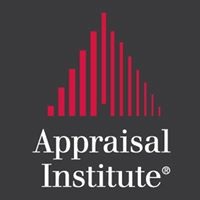In-Depth Scrutiny of Published Data Improves Property Market Understanding: The Appraisal Journal
CHICAGO (April 11, 2019) — (RealEstateRama) — A detailed analysis of population and employment data, along with the use of fair share comparisons, increases the accuracy of assumptions made by appraisers when completing commercial valuation assignments, according to a study published this week in The Appraisal Journal.

The Appraisal Journal is the quarterly technical and academic publication of the Appraisal Institute, the nation’s largest professional association of real estate appraisers. The materials presented in the publication represent the opinions and views of the authors and not necessarily those of the Appraisal Institute.
“Improving Market Analysis in Commercial Real Estate Appraisal Assignments,” by David W. Koepke, shows how market and submarket information from published sources may be inadequate to truly understand supply and demand forces affecting a commercial property. The article demonstrates how a more detailed analysis of population and employment, along with use of fair share tables, can provide a much clearer picture of the actual competitiveness of the property in its market. This approach increases the accuracy of the many assumptions required to complete an appraisal assignment
Read “Improving Market Analysis in Commercial Real Estate Appraisal Assignments” in the Winter 2019 issue of The Appraisal Journal.
Also in The Appraisal Journal’s Winter 2019 issue:
“Residential Government Agency Requirements and Case Studies on Measuring Market Reaction to Energy-Efficient Features,” by Sandra K. Adomatis, SRA, looks at Fannie Mae, Freddie Mac, and FHA guidelines that require appraisers to measure market reaction to energy-efficient features as part of their market analysis. This article clarifies and demonstrates the variety of acceptable analytical approaches to support opinions on market reaction.
“Residential Perspective on Data Collection and Property Description in the Valuation Process,” by Arlen C. Mills, MAI, SRA, examines data collection and property description procedures in the appraisal process. It specifically considers the evolution of raw data to market evidence as more information is gathered and verified. The article emphasizes that the use of both verified public transaction data and research information acquired directly from the parties is what separates professional appraisers’ opinions of value from value estimates of others.
Stay connected with the latest news from the Appraisal Institute on Facebook, Twitter, LinkedIn, YouTube and our blog, Opinions of Value.
The Appraisal Institute is a global professional association of real estate appraisers, with nearly 18,000 professionals in nearly 50 countries throughout the world. Its mission is to advance professionalism and ethics, global standards, methodologies, and practices through the professional development of property economics worldwide. Organized in 1932, the Appraisal Institute advocates equal opportunity and nondiscrimination in the appraisal profession and conducts its activities in accordance with applicable federal, state and local laws. Individuals of the Appraisal Institute benefit from an array of professional education and advocacy programs, and may hold the prestigious MAI, SRPA, SRA, AI-GRS and AI-RRS designations. Learn more at www.appraisalinstitute.org.
# # #
For more information:
Brent Roberts
O 312-335-4441; C 847-989-8670












